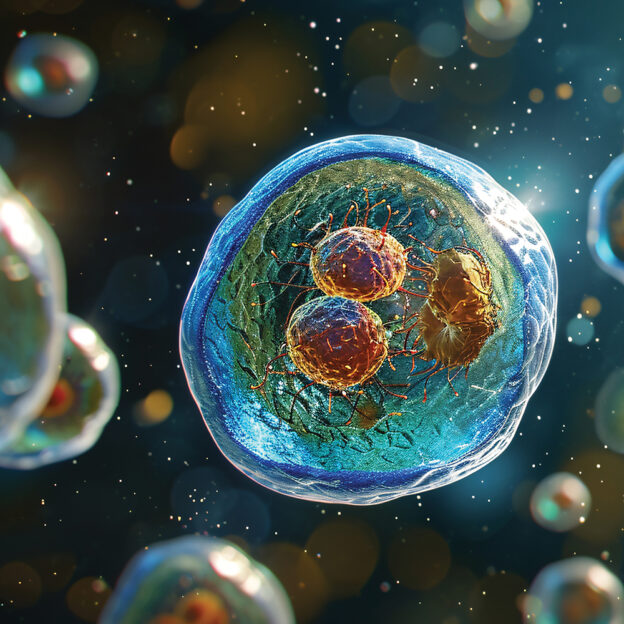By Bruce Fife.

Osteoarthritis is the most common form of arthritis and affects more than 40 million Americans. Although there are many theories as to the cause, there is no universally recognized cure. Treatment focuses on reducing or masking pain with painkillers and anti-inflammatories. The most popular medications are nonsteroidal anti-inflammatory drugs (NSAIDs) like Advil, Motrin, Aleve, etc. Some are prescribed and some are not.
Osteoarthritis is one of the major causes of disability in adults. It usually affects the weight-bearing joints, such as the knees and the hips, but also commonly involves the finger joints, especially the end joints, and the spinal column from the neck down to the hips.
Osteoarthritis makes its appearance subtly with morning stiffness, which over time can eventually transform into severe pain and disability. In some cases, it can lead to surgery and joint replacement. Medications can help ease the pain and discomfort, but they do nothing to stop the progression of the disease. In fact, their use guarantees the condition will eventually get worse. While NSAIDs may temporarily lessen the pain, they do nothing to prevent further damage or heal diseased joint tissue. While the pain may be abated to some extent, the joints continue to degenerate, growing worse day after day. NSAIDs actually hasten the deterioration of cartilage. These drugs also produce many unwanted side effects. They can cause nausea and even hemorrhaging in the gastrointestinal tract. They can initiate leaky gut syndrome, which can lead to chemical and food sensitivities as well as autoimmune disorders. In addition to the joint pain, a multitude of other health problems may develop.
Despite the grim statistics, a diagnosis of osteoarthritis is not a life sentence of pain and disability. Osteoarthritis is reversible. The cause is known, and an effective treatment is available.
The secret to reversing osteoarthritis is to understand the underlying cause. While a single cause is not universally recognized by doctors, various theories have been proposed, including excessive wear and tear, injury, age, genetics, environmental toxins, malnutrition, food allergies, and infections. While all of these factors may have an influence and may exacerbate the condition, only one has repeatedly been shown to actually cause osteoarthritis.
So what causes most cases of osteoarthritis? The answer is infection. Joint tissue makes an ideal breeding ground for infection. Joints are enclosed in what is called a joint capsule. While fluids fill the joint capsule, they contain no blood. Blood cannot pass through the tough fibrous layers of the capsule wall. Bacteria and other microorganisms, however, can. Once inside the joint capsule, they infect the cartilage, bone, and connective tissues, leading to the deterioration and pain characteristic of osteoarthritis. Once an organism has infected the joint tissues, it is difficult to eradicate. Since there is no blood circulating in and out of the joint capsule, the ability of white blood cells to fight off infection is greatly reduced. Antibiotics are often ineffective because they are delivered by the bloodstream. And if the infection is caused by a fungus or virus, antibiotics are useless.
Infection has long been suspected as the primary cause for osteoarthritis. In human and animal studies, osteoarthritis is known to be initiated by various forms of bacteria, including salmonella, streptococcus, and others. While it is generally acknowledged that arthritis can be caused by infection, most doctors have not yet accepted the idea that all cases of osteoarthritis are the result of infection. One of the reasons for this is that infectious organisms have not been conclusively identified in every case of osteoarthritis. However, doctors rarely test osteoarthritis patients for the presence of infection. Even if they did, results would be open to question.
The organisms that can cause osteoarthritis aren’t always easy to identify using standard diagnostic procedures. Laboratory tests for infection are not always conclusive. In a study that reviewed 168 confirmed cases of infectious arthritis, investigators found that blood cultures failed to show infection 50 percent of the time. Other symptoms of infection, such as increased white blood cell count, occurred in only 40 percent of cases. Therefore, the inability to identify an infectious involvement is not unusual.
Another reason why an infectious cause has not been universally accepted is because osteoarthritis doesn’t always respond to antibiotic therapy. Infection in the joints, however, is very difficult to treat. Because the organisms are sealed inside the joint capsule, antibiotics are less effective. Taking antibiotics for a few days, as you would with most infections, won’t cut it. In cases where bacteria are known to be the cause of the arthritis, treatment often consists of continuous intravenous antibiotic therapy followed by oral antibiotics. The entire process may last for a month or more.
Aggressive antibiotic treatment may work for most bacterial infections but will not work for antibiotic-resistant bacteria or for viruses, fungi, or parasites. In these cases, antibiotics have no effect. Osteoarthritis is known to be initiated by viruses and fungi as well as bacteria.
The connection between osteoarthritis and infection is so well established that researchers can create osteoarthritis at will in the laboratory. If researchers want to study osteoarthritis in animals, they can induce the disease simply by injecting Candida albicans, a fungus, into the bloodstream. Osteoarthritis develops within days.
Candida is a common inhabitant of the digestive tract. Antibiotic therapy or poor lifestyle and dietary choices, which lower our immunity, can allow this fungus to grow out of control. In this case, it can spread beyond the digestive tract and infect other areas of the body. If it gets into the bloodstream, it can work its way into the joints, causing osteoarthritis. When candida gets into the bloodstream, it can cause a systemic infection called candidiasis. This may be the source of many cases of osteoarthritis.
An interesting case was reported involving a two-month-old infant girl who was being treated for severe bacterial diarrhea. She was put on antibiotic therapy. The antibiotic killed the infection but also killed the friendly bacteria in her digestive tract. Without competition from this good bacteria, the candida living in her digestive tract was allowed to multiply unrestrained. As a consequence, she developed a severe case of candidiasis. The candida attacked her joints, causing osteoarthritis to develop in both of her knees, her left hip, and several other joints. This case is interesting because osteoarthritis is often viewed as a disease of old age, resulting from excess wear and tear on the joints. Obviously, age was not a factor here. Likewise, the disease had clearly not resulted from excessive use or injury to the joints, since the infant was too young to have ever walked or even crawled.
People who have had repeated yeast infections or candidiasis usually don’t make the connection between the onset of chronic joint pain and candida overgrowth. Women are the ones most troubled by candida infections and are also the ones most affected by osteoarthritis.…
For full article and references see the January/February 2010 issue (available in digital format only).





